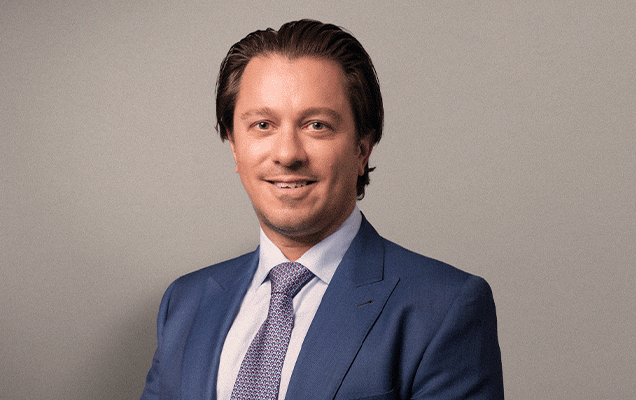Pediatric Chiari Malformation is a condition where the brain tissue extends into the spinal canal, which can cause several health issues for children. This usually happens from birth and involves the cerebellum, a part of the brain that helps with balance, poking through an opening at the base of the skull. It’s really important for parents to understand this condition because spotting it early and getting the right treatment can significantly enhance a child’s quality of life.
Understanding Pediatric Chiari Malformation
Chiari malformations are structural defects located at the back of the brain, affecting how the brain and spinal cord function, as well as the flow of cerebrospinal fluid around the brain and spinal cord. These malformations can run in families and are classified into several types, with Type 1 being the most common among children.
1. Type I Chiari Malformation: In this type, the lower part of the cerebellum, called the cerebellar tonsils, extends into the foramen magnum (the opening at the base of the skull). It might not cause symptoms in some individuals and can be discovered incidentally.
2. Type II Chiari Malformation: This is often associated with a form of spina bifida called myelomeningocele. It involves more extensive herniation of the cerebellum and brainstem into the foramen magnum. It’s typically diagnosed during infancy or before birth.
3. Type III Chiari Malformation: This is a more severe form where parts of the cerebellum and brainstem protrude through an abnormal opening in the back of the skull. This type is often associated with neurological defects and can be life-threatening.
4. Type IV Chiari Malformation: This is a rare form where the cerebellum fails to develop properly. It’s the most severe type and can cause significant neurological issues.
Each type can present with various symptoms, including headaches, neck pain, balance problems, vision and swallowing difficulties, and in severe cases, it can lead to hydrocephalus or spinal cord damage. Treatment might involve surgery to create more space at the base of the skull or to restore normal flow of cerebrospinal fluid.
Spotting the Symptoms of Pediatric Chiari Malformation
Not all kids with Chiari Malformation will show symptoms, but some might have headaches, neck pain, trouble coordinating their movements, and other neurological signs. Type II Chiari Malformation usually shows more severe symptoms because of the pressure on the brain and issues with spinal fluid flow.
Common Symptoms Include
– Neck pain
– Headaches that get worse with coughing or straining
– Problems with balance
– Weak muscles
– Sleep apnea (trouble breathing while sleeping)
– Pain or numbness in the arms or legs
– Trouble swallowing
In more serious cases, a syrinx (a fluid-filled cyst) might form in the spinal cord, making symptoms worse and leading to more problems.
It's time to get back to doing what you love.
Diagnosing Pediatric Chiari Malformation
Diagnosing Chiari Malformation involves neurological examinations and imaging tests. Doctors often use MRI scans to view the affected area and assess the degree of protrusion or any obstruction to the cerebrospinal fluid (CSF) flow. In cases involving breathing issues like sleep apnea, a sleep study might be necessary.
If there’s suspicion of a syrinx or other abnormalities of the spinal canal, additional imaging like full spine MRI might be ordered to gather more detailed visuals of the spinal cord.
Treatment Options for Pediatric Chiari Malformation
Treatment for Chiari Malformation varies depending on the type, severity, and symptomatic presence.
1. Monitoring – If your child shows no symptoms, doctors might recommend regular monitoring instead of immediate intervention. This approach involves periodic imaging and physical exams to watch for changes.
2. Medications – For mild symptoms, medication may be prescribed to manage pain and other discomforts.
3. Decompression Surgery – This is the most common treatment for children with Chiari Malformation experiencing significant symptoms. Decompression surgery aims to relieve pressure on the brain and spinal cord and restore normal CSF flow. The procedure often involves removing a small section of bone at the back of the skull, relieving pressure and creating more space for the brain.
Minimally Invasive Non-Dural Opening Decompression Surgery: In this approach, the dura mater is not opened. Instead, surgeons work around the dura, aiming to decompress the area without directly exposing the brain and spinal cord. Techniques such as removing bone to increase the size of the bony opening (foramen magnum) without entering the dura might be employed. This method is considered less invasive than dural opening decompression. At Neurosurgeons of New Jersey, we provide families with this minimally invasive option.
Dural Opening Decompression Surgery: This approach involves making an incision in the dura mater (the tough outer membrane covering the brain and spinal cord) to access the area where the herniation of the cerebellar tonsils is occurring. Surgeons perform this decompression by removing a small portion of the skull at the back of the head (suboccipital craniectomy) and sometimes the first cervical vertebra (C1), creating more space around the herniated area. Opening the dura allows direct visualization of the structures and often involves a more extensive surgical procedure.
The choice of surgical technique for Chiari Malformation, whether minimally invasive or more extensive, is determined by the neurosurgeon based on factors like the malformation’s severity, associated health conditions, the specific anatomy of the patient, and the extent of brain tissue herniation. The goal of both methods is to relieve pressure, improve cerebrospinal fluid flow, and alleviate symptoms, ensuring the best possible outcome for the patient.
Long-Term Outlook
The outlook is generally positive for children with Chiari Malformation, especially if it’s caught early and treated right. However, there might be long-term issues to watch out for, like ongoing neurological symptoms or sleep problems.
Support for Families with Pediatric Chiari Malformation
It can be tough dealing with a Chiari Malformation diagnosis, but there’s support out there for families. Support groups and resources are available to help navigate the emotional and practical aspects of managing this condition. It’s also crucial for families to work with a dedicated medical team experienced in pediatric Chiari malformations to ensure comprehensive care.
Hope and Help
While Pediatric Chiari Malformation can be a complex condition, understanding it, catching it early, and getting the right treatment can help kids lead full and active lives. There’s a path forward through monitoring, treatment, and support, and families don’t have to walk it alone. With the right care and community resources, kids with Chiari Malformation can thrive.

About Dr. Luigi Bassani
Dr. Luigi Bassani is an accomplished board-certified neurosurgeon in Central Jersey and a proud member of Neurosurgeons of New Jersey, practicing out of their Livingston office. Dr. Bassani specializes in the diagnosis and treatment of a broad range of pediatric brain and spinal cord tumors and deformities including but not limited to pediatric epilepsy, cervical spine trauma, brain cancer, brain and skull growth abnormalities, and blood vessel disorders. In 2015 and 2017, he was named New Jersey’s Favorite Kids’ Docs for Pediatric Neurosurgery. Dr. Bassani also utilizes minimally invasive surgical techniques to treat adult patients suffering from brain tumors, herniated discs, and spinal trauma or degeneration. He’s accepting new patients.






